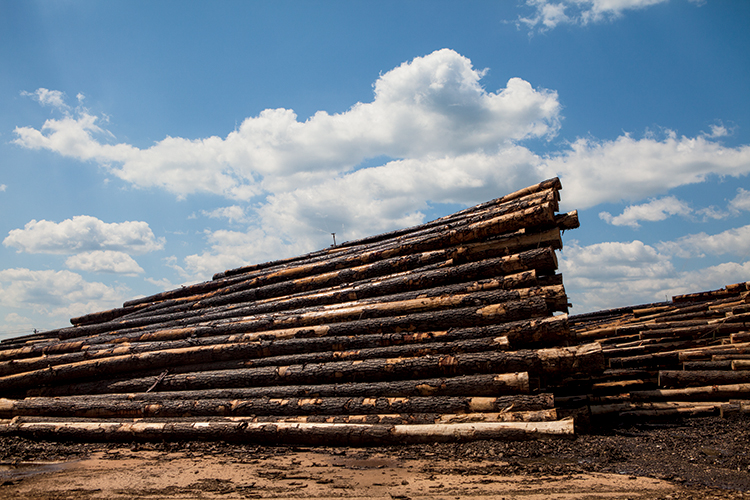Home > Mississippi > Mississippi Crops & Livestock > Touting Timber in Mississippi
Touting Timber in Mississippi
In partnership with: Mississippi Department of Agriculture and Commerce
 To many people, terms like portfolios, pension funds, and long-term investments are often associated with the movers and shakers of Wall Street. But to others, they’re also increasingly connected to the pines and hardwoods of Mississippi. One of the latter is Bob Lyle, executive vice president of the Molpus Woodlands Group and Molpus Timberlands Management in Jackson. He would argue that money does indeed grow on trees. “The thing that has been exciting for me to learn as I’ve gotten more into the business is that the real value in managing and growing trees is the biological growth,” says Lyle, a leader of one of the country’s oldest timber-related companies, and one that has experience in areas such as timber management, manufacturing and marketing. “No matter how the stock market is performing, what governmental financial policies are being addressed, if the good Lord allows it to rain and the sun to shine, trees literally can grow from 8 to 12 percent per year, if managed appropriately. “I can’t find many other investment opportunities with that unique advantage.”
To many people, terms like portfolios, pension funds, and long-term investments are often associated with the movers and shakers of Wall Street. But to others, they’re also increasingly connected to the pines and hardwoods of Mississippi. One of the latter is Bob Lyle, executive vice president of the Molpus Woodlands Group and Molpus Timberlands Management in Jackson. He would argue that money does indeed grow on trees. “The thing that has been exciting for me to learn as I’ve gotten more into the business is that the real value in managing and growing trees is the biological growth,” says Lyle, a leader of one of the country’s oldest timber-related companies, and one that has experience in areas such as timber management, manufacturing and marketing. “No matter how the stock market is performing, what governmental financial policies are being addressed, if the good Lord allows it to rain and the sun to shine, trees literally can grow from 8 to 12 percent per year, if managed appropriately. “I can’t find many other investment opportunities with that unique advantage.”
Valuable Tools
Mississippi is prime for timber management and investment. It has some 19.7 million acres of forestland, comprising 66 percent of the state’s land area. The total economic impact of forestry and the forest products industry is $14.8 billion. Private, nonindustrial landowners own nearly 70 percent of Mississippi’s forests. Lyle says it’s important for landowners to properly manage their forests, whether it’s an old growth stand of hardwood trees or a shorter-rotation pine plantation. “Mississippi has both beautiful hardwood and pine species, and either one can be a lucrative investment,” he says. “They can be used for people’s portfolio investments or retirement, or for their current income needs.” As the forestry industry has changed in recent years, small landowners now have more access to professional-grade forest managers and consultants who can help them develop written management plans, and perform a timber inventory — benefits traditionally available to large landowners through companies such as timberland investment management organizations (TIMOs). “While we engage exclusively in timberland management for larger clients, there are a number of professional consultants available to serve smaller-scale landowners as well. Individuals should consider utilizing the expertise available,” Lyle says. “If a landowner is preparing to plant a forest or sell timber, I highly recommend they seek professional advice before doing so. “As with row crops, we use intensive management from the tilling of the soil to the use of fertilizer to appropriate herbicides. Also, like a row-crop farmer is concerned about using a good-quality seed, we start with high-quality seedlings that are genetically improved using the latest research to grow a superior tree.”
Research Is Key
Valuable resources can also be found from the Mississippi Forestry Association and the Mississippi State University (MSU) Forestry Extension. At MSU, for instance, research is looking to improve the return on investment for the state’s timber industry. Randy Rousseau, professor and extension forestry specialist, is collaborating with others on staff to develop best management practices for biomass. He also does research on Dedicated Energy Plantations, which can produce exceptional quantities of woody fiber over a short three- to eight-year period. “When we do research, we’re looking to produce high-quality timber,” he says. “You have to work with Mother Nature, and understand the various aspects of what it takes to produce a high-quality tree.



